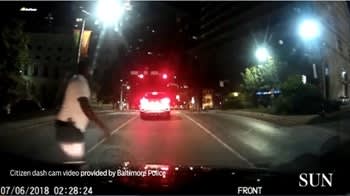Earlier this week, it was reported that an off-duty firefighter approached a Baltimore police officer to report seeing a man with a gun in the nearby area. He and two friends had seen the man two times in the span of a couple of minutes, capturing the scene on dash-cam video.
The firefighter called 911 twice, but no police responded. Reportedly fearing that the gunman might open fire on them, they left the area. The came upon the officer and approached her.













